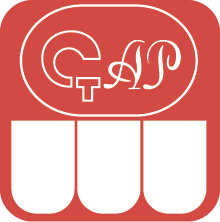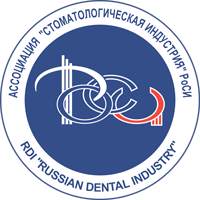DOI:
10.37988/1811-153X_2025_1_110Comparative characteristics of facial scanners
Downloads
Abstract
The development of digital technologies and devices used in orthopedic dentistry makes it possible to reduce the time for making a prosthesis, reduce costs and improve the quality of manufactured prostheses. One of the most important stages in the production of a prosthesis in a digital protocol is the stage of obtaining digital impressions, which must be as accurate as possible. Goal — to experimentally evaluate the accuracy of three-dimensional images and determine the most suitable models of facial scanners, optimal in terms of price and quality ratio. Materials andMethods.
The study examined four scanner models: 3dMDface, ObiScanner, Einstar, and Planmeca ProMax 3D ProFace. The reference model chosen was the stationary scanner VT MINI V2 (Volume Technologies, Russia). A facial mannequin with areas of textured surface was used, and specific points (grooves, indentations) were selected, as these points could be reproduced across different scans: points 1 and 2 represent the outer corners of the eyes, points 3 and 4 correspond to the corners of the mouth, and point 5 indicates the chin. All obtained images were imported into the Exocad software, where each scan was sequentially overlaid onto the reference model scan, and the distance between the scans was measured. Five such studies were conducted for each scanner.
Results.
The ObiScanner demonstrated the least deviation from the reference scan at a greater number of points: point 1 — 0.069 mm; point 4 — 0.015 mm; point 5 — 0.045 mm, and it is also acceptable in terms of price and availability. The Planmeca ProMax 3D ProFace scanner showed the least deviation from the reference scan at point 3 (0.008 mm), but it is the most expensive among the scanners involved in the study. The 3dMDface scanner had the least deviation at point 2 (0.068 mm) from the reference, but it is the most difficult to access and the second most expensive among the scanners in the study. The Einstar scanner exhibited higher deviation values from the reference scan at each point compared to the other scanners involved in the study, but it has the lowest cost and is easily accessible for purchase.
Key words:
additive technologies, facial scanners, facial prostheses, digital dental technologies, scanning accuracyFor Citation
[1]
Apresyan S.V., Stepanov A.G., Zrazhevskaya A.P., Suonio V.K., Grigoryants L.S. Comparative characteristics of facial scanners. Clinical Dentistry (Russia). 2025; 28 (1): 110—114. DOI: 10.37988/1811-153X_2025_1_110
References
- Kostiukova V.V., Riakhovskiĭ A.N., Ukhanov M.M. Comparative study of intraoral 3D digital scanners for restorative dentistry. Stomatology. 2014; 1: 53—59 (In Russian). eLIBRARY ID: 21218165
- Pellitteri F., Brucculeri L., Spedicato G.A., Siciliani G., Lombardo L. Comparison of the accuracy of digital face scans obtained by two different scanners. Angle Orthod. 2021; 91 (5): 641—649. PMID: 33826690
- Apresyan S.V., Stepanov A.G., Vardanyan B.A. Digital protocol for comprehensive planning of dental treatment. Clinical case analysis. Stomatology. 2021; 3: 65—71 (In Russian). eLIBRARY ID: 46222733
- Liu C., Artopoulos A. Validation of a low-cost portable 3-dimensional face scanner. Imaging Sci Dent. 2019; 49 (1): 35—43. PMID: 30941286
- Coward T.J., Watson R.M., Scott B.J. Laser scanning for the identification of repeatable landmarks of the ears and face. Br J Plast Surg. 1997; 50 (5): 308—14. PMID: 9245863
- Mirzoeva M.S. Application of scanning techologies in orthopedic dentistry: a review. Actual Problems in Dentistry. 2017; 1: 31—34 (In Russian). eLIBRARY ID: 29256718
- Dalstra M., Melsen B. From alginate impressions to digital virtual models: accuracy and reproducibility. J Orthod. 2009; 36 (1): 36—41. PMID: 19286874
- Luthardt R.G., Koch R., Rudolph H., Walter M.H. Qualitative computer aided evaluation of dental impressions in vivo. Dent Mater. 2006; 22 (1): 69—76. PMID: 16040117
- Ryakhovskiy A.N., Kostyukova V.V. Implant-supported fixed cantilever prosthesis: the impact on bone stress deformity. Stomatology. 2016; 4: 65—70 (In Russian). eLIBRARY ID: 26603275
- Rudolph H., Luthardt R.G., Walter M.H. Computer-aided analysis of the influence of digitizing and surfacing on the accuracy in dental CAD/CAM technology. Comput Biol Med. 2007; 37 (5): 579—87. PMID: 16844107
Downloads
Received
July 23, 2024
Accepted
March 2, 2025
Published on
April 7, 2025









